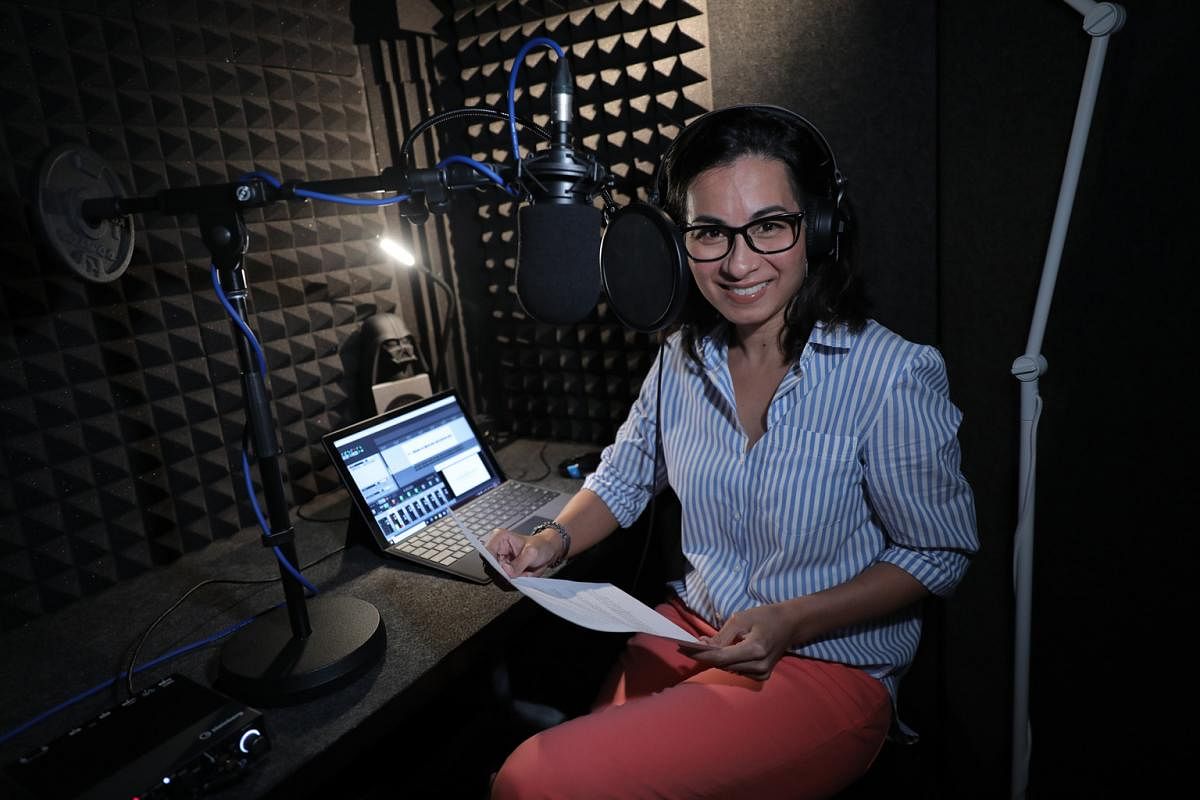He says he was informed that his in-flight work for Singapore Airlines will resume in November.
While these artists say that quality voice-over work can be produced at home, Mr Tun-Aung is looking forward to getting back in a professional studio.
"If I'm recording at home, I need to do the editing alone at night. I still enjoy it immensely, but it's not the same experience as recording in a proper studio."
3 essential tools for a voice-over studio
To set up a voice-over studio at home, you need three essentials: a good microphone, an audio interface which connects the microphone to your computer, and the right software.
Once you have all three essentials, pick the quietest part of your home to set up your studio or to do the recording. It could be a room, the storeroom or just the farthest point from the window.
1. MICROPHONE
The Audio-Technica AT2020 Cardioid Condenser microphone (left) and the Blue Microphones Ember Xlr Studio Condenser Microphone (right) are wired options that have good build quality and great sound quality. They are also in a similar price range of $120 to $140.
2. AUDIO INTERFACE
This is hardware that gets the audio from your microphone to your computer. Audio recorded through the interface is of higher quality and allows for more inputs such as professional-level microphones.
An affordable option is the Rode AI-1 (above) at around $200 from online retailers such as Lazada.
It has a solid build quality, phantom power for microphones that need it and two simple knobs to adjust the microphone volume and speaker or headphone volume.
3. SOFTWARE
If you are using a Mac, you already own the cheapest audio software option. GarageBand is a digital audio workstation software by Apple that can be downloaded and used for free. The cheapest Apple computer is the MacBook Air (above), which starts at $1,449.
For both PC and Mac users, there is Adobe Audition, another powerful audio software that can record and edit multi-track clips. It sits within Adobe's Creative Cloud suite of applications and services which users can subscribe to.
There is a seven-day free trial, after which you can pay for a monthly subscription at $41.43, or a year's subscription at $27.62 a month.
Bryan De Silva





